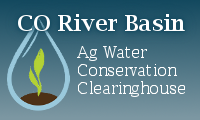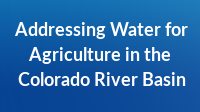
Demonstrate Available Technology
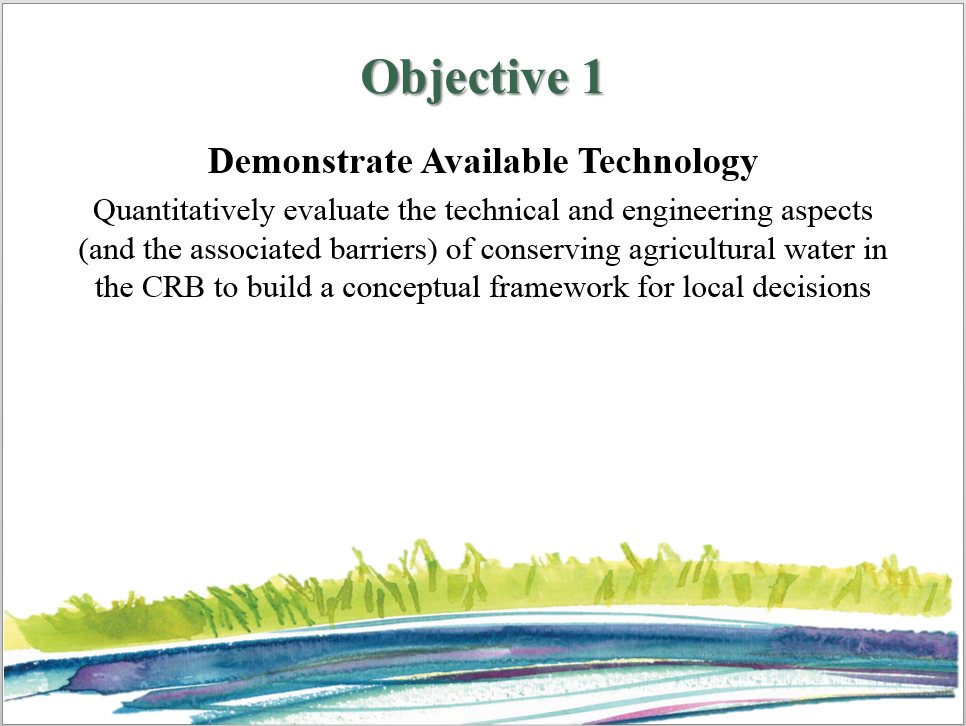
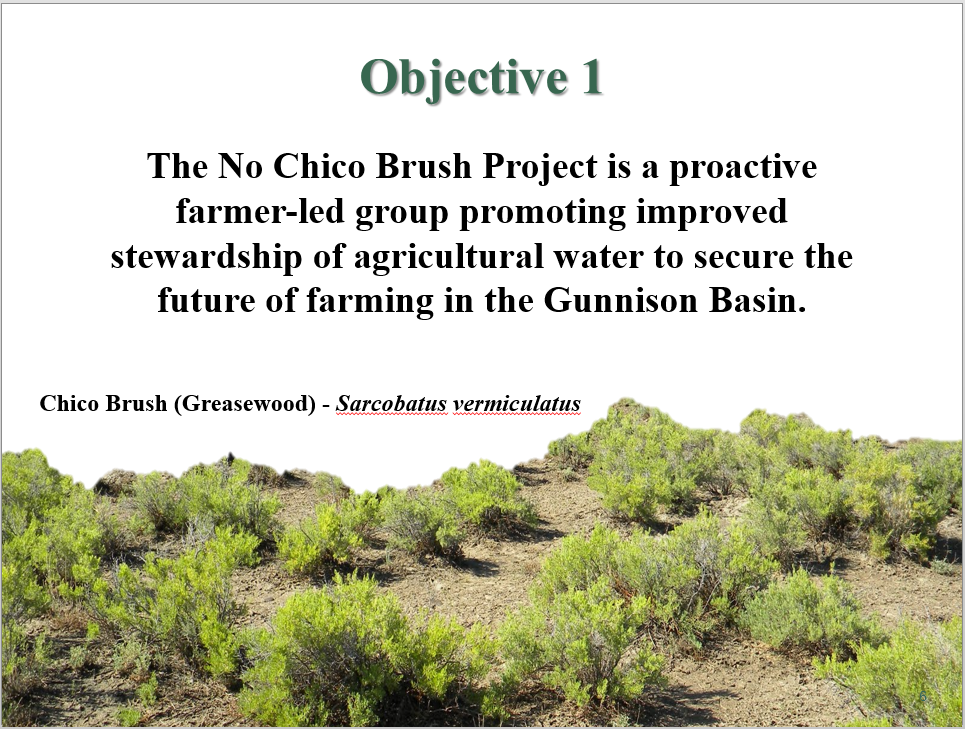
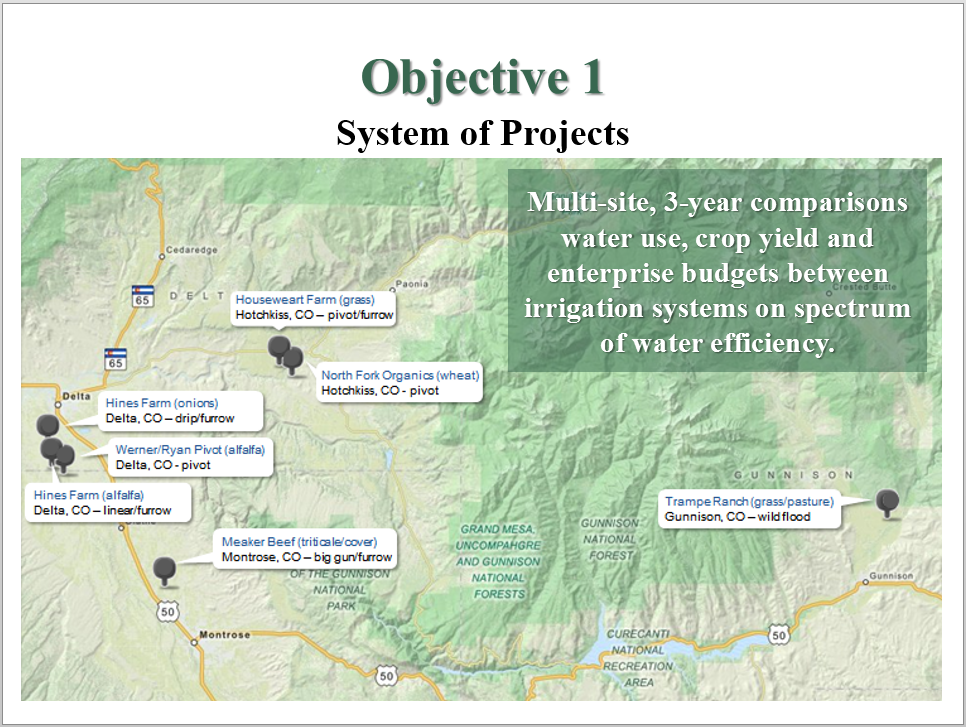
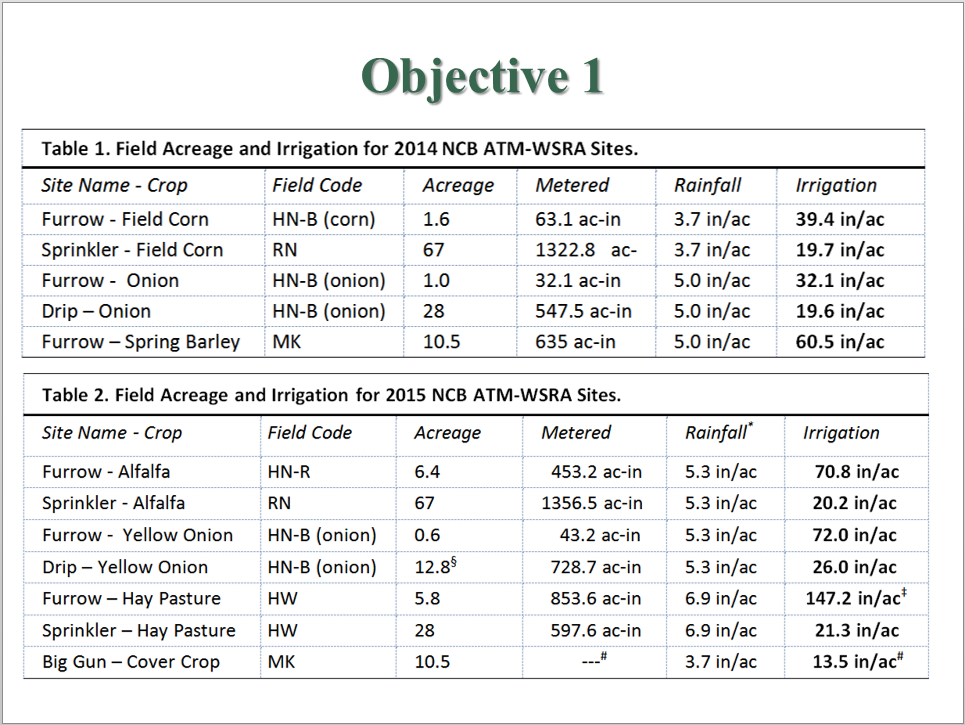
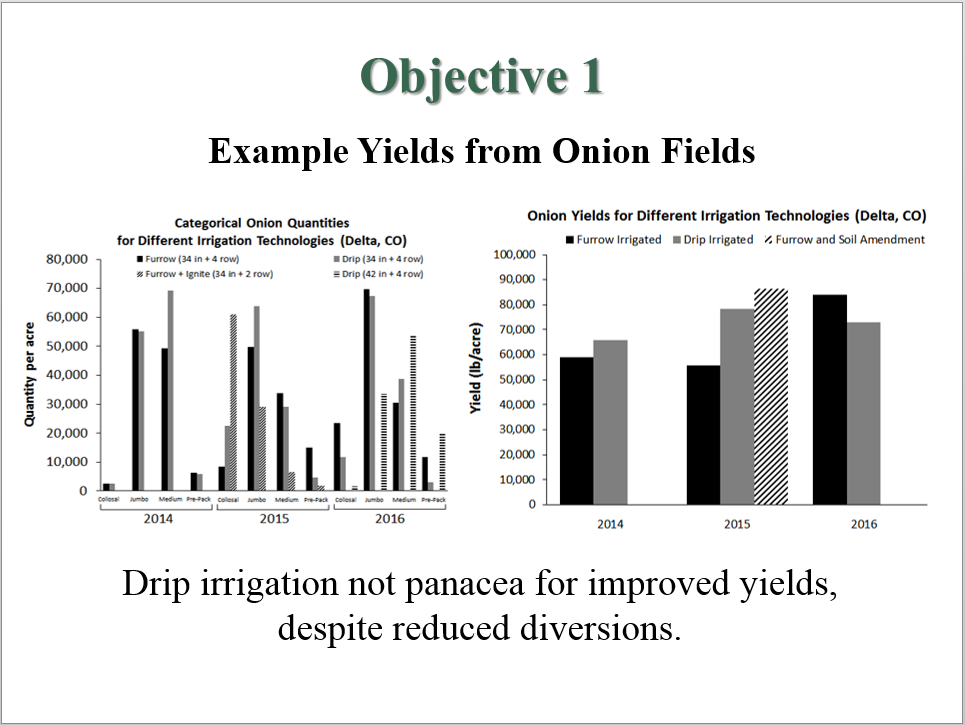
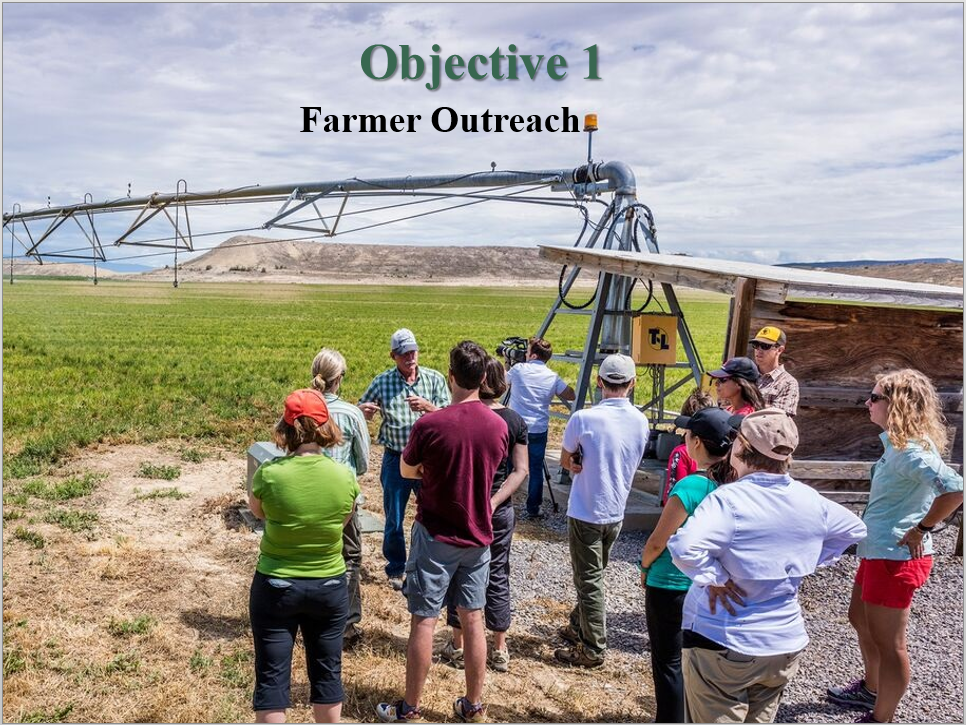
The purpose of Objective1 was to quantitatively evaluate the technical and engineering aspects (and the associated barriers) of conserving agricultural water in the CRB to build a conceptual framework for local decisions. The focus of CRBAg2 collaborator Perry Cabot is concentrated in the Lower Gunnison Basin of Colorado, in conjunction with two projects funded by the Colorado Water Conservation Board (CWCB) through an Agricultural Transfer Methods (ATM) and the Gunnison Basin Round Table (GBRT) through a Water Supply Reserve Account (WSRA). The CWCB-ATM project is entitled "No Chico Brush Group: A farmer-led initiative to quantify and demonstrate irrigation efficiencies at farm-scales through instrumented water budgeting" and the GBRT WSRA project is entitled "No Chico Brush Agricultural Water Research Project." The No Chico Brush (NCB) farmer-led advocacy group takes its name from the unsightly and undesirable "Chico Brush" or "Greasewood" (Sarcobatus vermiculatus) that is emblematic of despoiled landscapes deprived of irrigation water and sustained farming. The NCB group seeks to document the effects of irrigation efficiency and soil health practices on farm productivity, and water quality and water quantity in the saline shales found in western Colorado.
Research was conducted collaboratively with the NCB farmer-led advocacy group to conduct local evaluations various approaches for conserving and saving agricultural water through improving infrastructure at the field scale. Formal and informal interactions with the farmers of the Gunnison Basin identified four primary reasons why switching away from furrow irrigation is advantageous. First, farmers express a goal of saving on labor costs or dealing with labor shortages. In particular, the expense of improved irrigation systems is considered more justifiable by producers who operate at a margin of higher profitability (organic agriculture, specialty crops, niche farming). Secondly, farmers express a goal of improving resilience to water shortages, both natural and administrative. Drought pressures arise as an abstract concern, but shortages anticipated by junior water rights holders, for example, tend to elicit more direct action. Finally, some farmers hold the position that improvements in irrigation efficiency may support a perceived ideal of perfecting water rights. Evaluations of irrigation improvements in the Gunnison Basin are generally in agreement with the conventional wisdom that furrow irrigation systems are less efficient at field-scale application of water, as compared with improved systems such as sprinkler and drip. Attainable irrigation efficiencies for graded furrow, sprinkler (with spray heads) and drip irrigation are reported at 80%, 95%, and 95% (Howell et al., 2003), but in practice the achieved efficiencies are often lower. The table below summarizes the results of our irrigation efficiency (IE) evaluations at several sites in the Gunnison Basin. The table provides consumptive use (CU) calculated using a yield-based crop production function (CPF), and also water supply-limited CU (WSLCU), which is an estimation of the water actually used by crops during the growing season, as measured using the soil moisture sensors installed at each site. The table also provides the measured water-application rate for each irrigation method, as well as the IE calculated using the CPF and WSLCU approaches.
Despite the advantages and drivers of changing their irrigation systems to be more efficient, producers in the areas of the Western Slope and particularly the Uncompaghre Valley have experienced significant challenges in using these newer systems. The Gunnison Basin evaluations identified concerns. First, the electrical and fuel cost of operating mechanized irrigation systems is perceived as a significant barrier. Secondly, operational troubles are experienced by farmers wanting to satisfy high ET requirements (e.g., alfalfa) while contending with slower infiltration rates on clay and clay loam soils. The effect of this obstacle is most often experienced when overhead sprinkler wheel tracks consistently consolidate due to improper nozzling near support towers. Too often it is also the case that pivots are adopted without a pathway for conversion, such as 1-2 years of fallow or cover-cropping. Thirdly, field shape and optimization emerged as another obstacle. More specifically, some producers have reservations about converting square fields into circular fields, and sacrificing the ability to farm the corners profitably. Additional obstacles of field configuration and size were expressed, considering that most fields on the Western Slope are currently small (< 20 ac) and irregularly shaped. Fourth, farmers express frustration regarding the lack of industry and government support for technical service and training to use improved irrigation systems. This frustration also spills over into the technological reliability, which is not considered inherent, regarding everything from traveling outer sprinkler arms to soil moisture sensors. Fifth, producers who rely on telemetry to operate or monitor their systems express frustration over the lack of cellular signal stability.
